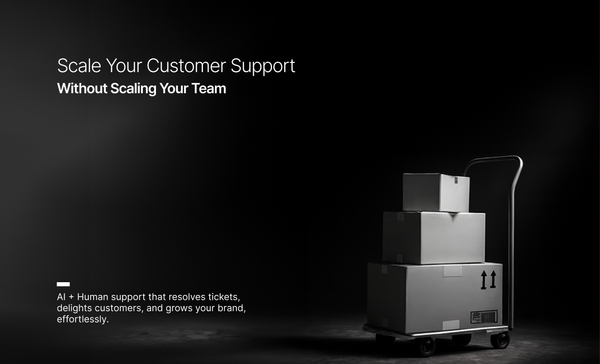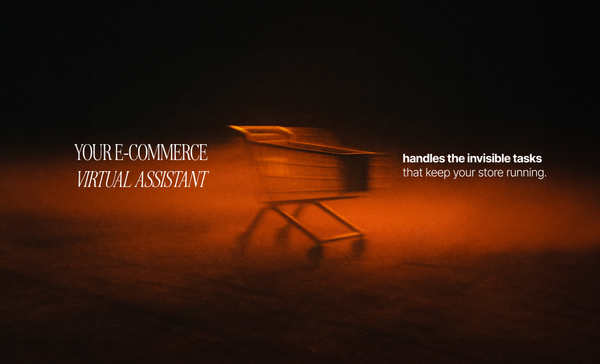Cart Abandonment Isn’t a Tech Problem, It’s a Support Gap You Can Fix
Every ecommerce brand is haunted by the same number, 70% of online carts get abandoned. Teams run A/B tests on button colors, polish UX flows, and obsess over milliseconds of page load time. Yet the number barely moves.
The uncomfortable truth is that most shoppers don’t abandon because of poor design or slow servers. They leave because no one answers them when they hesitate.
A customer wonders whether shipping will arrive in time, whether that new skincare line works on sensitive skin, or whether the return process is easy. They pause, wait for reassurance, and instead meet silence.
That silence doesn’t just lose a sale, it breaks trust.
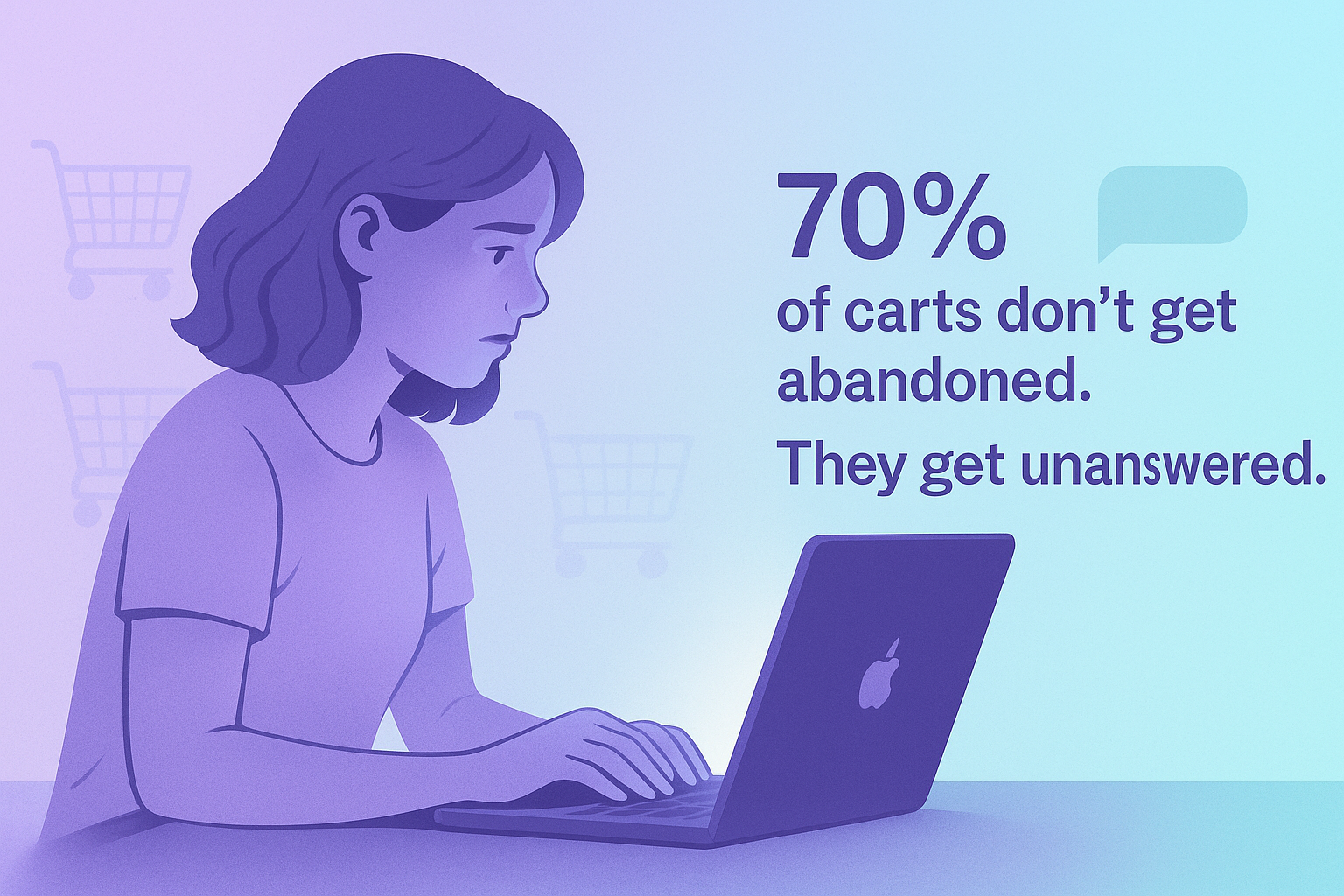
Why Shoppers Really Leave
Cart abandonment isn’t an act of frustration; it’s an act of uncertainty.
Most online buyers arrive ready to purchase. They’ve already done their research, compared prices, and made their emotional commitment. But the moment a question appears, about fit, delivery time, warranty, or authenticity, hesitation creeps in. And when there’s no one there to help, the easiest option is to leave.
Data backs this up. According to the Baymard Institute, the most common reasons shoppers abandon carts include:
- Unexpected costs (39%) such as shipping or taxes
- Mandatory account creation (18%)
- Slow delivery options (16%)
- Payment errors or checkout complexity (9%)
Each of these reasons connects to information clarity, not interface design.
For example:
A customer may accept shipping costs if they’re explained early and transparently. A 2-day delay may not matter if support can confirm the arrival date. Even a payment failure can be recovered if a chat agent can help retry safely.
Support turns unknowns into answers, and every resolved doubt is a saved sale.
A report from Kayako found that customers who engage in live chat are six times more likely to convert than those who don’t. That single moment of human reassurance is often more persuasive than any discount code.
How Support Changes the Checkout Story
Let’s follow a real scenario.
A shopper browsing an activewear brand finds a pair of leggings they like but hesitates between two sizes. They scroll up, hover over the size chart, and wait. At that moment, a message pops up:
“Need help finding your perfect fit? Our team can guide you in 30 seconds.”
This isn’t pushy, it’s helpful. The shopper clicks, shares height and waist size, gets an instant suggestion, and checks out confidently.
That’s what support at the right moment looks like. It prevents abandonment before it happens.
Support can directly influence three points in the customer journey:
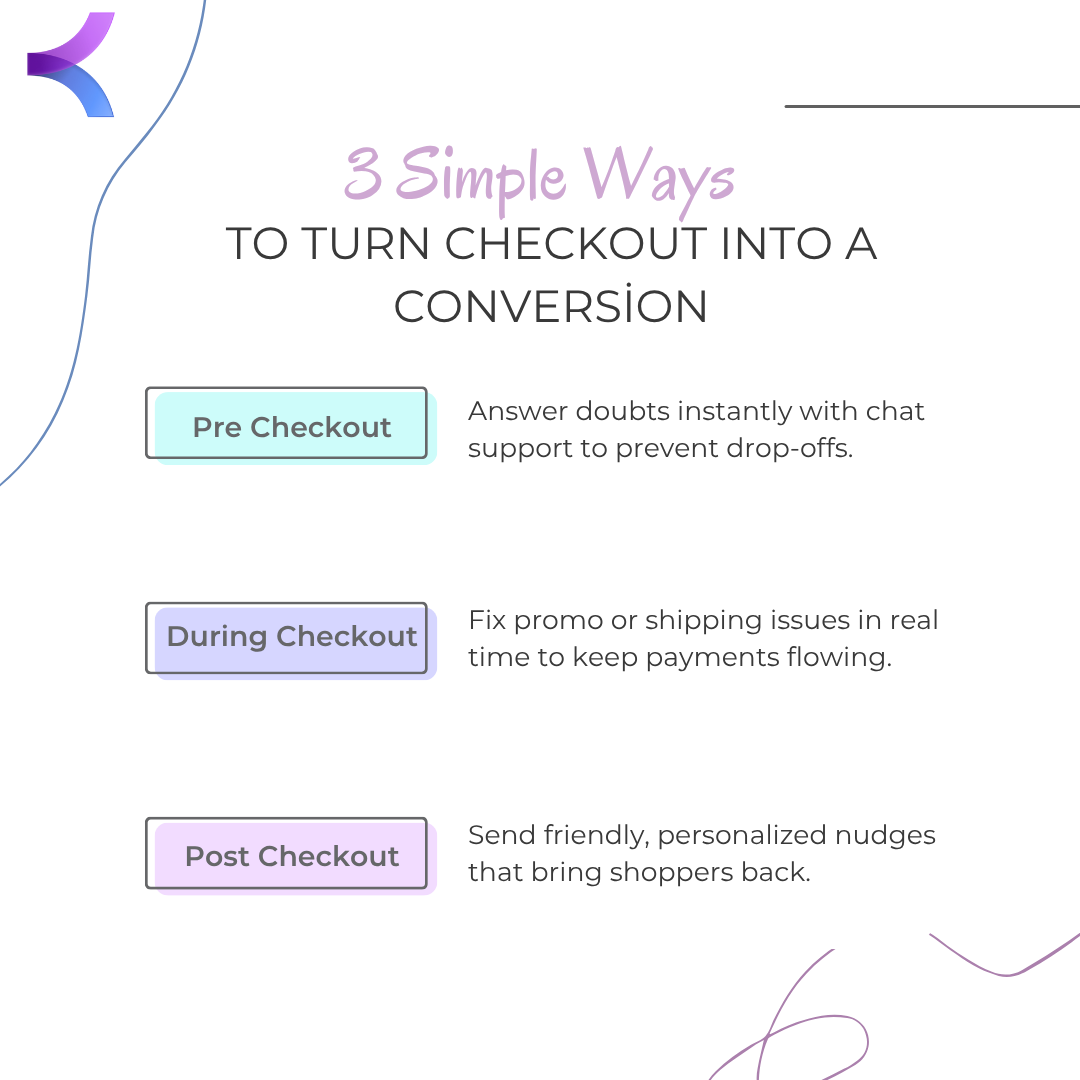
1. Pre-Purchase Doubt
This is where most sales quietly disappear. Questions about materials, fit, or return policies cause hesitation.
AI-assisted live chat here acts like a sales associate in a physical store, available, responsive, and informed.
According to Zendesk’s 2023 CX Trends report, customers who chat before purchase are 82% more likely to buy. It’s not the technology that drives this conversion; it’s the presence of support at the moment of doubt.
2. During Checkout
Even the smoothest checkout flow can’t prevent friction when questions arise mid-payment. Promo codes fail, shipping costs confuse, or delivery dates feel vague.
Sending customers to a static FAQ or generic help page breaks the flow.
Instead, real-time chat embedded within checkout can resolve friction instantly, the way an in-store cashier might reassure a shopper that a coupon still applies.
Brands that integrate checkout-level support regularly recover thousands in lost orders per month.
3. Post-Abandonment Recovery
When a customer leaves, the conversation doesn’t have to end.
Support-led outreach through personalized email or WhatsApp messages can remind customers why they added an item in the first place. The key is tone.
Instead of the robotic “You left something behind,” a message like “Hey, we noticed you were checking out the new AirFlex leggings. Want help picking the right size before you order?” keeps the interaction human.
Support doesn’t just react to problems, it preempts them. That’s the foundation of conversational commerce.
What Great Support Looks Like
Great support doesn’t happen by accident. It’s designed intentionally across every customer touchpoint. Here’s what high-performing ecommerce brands do differently:
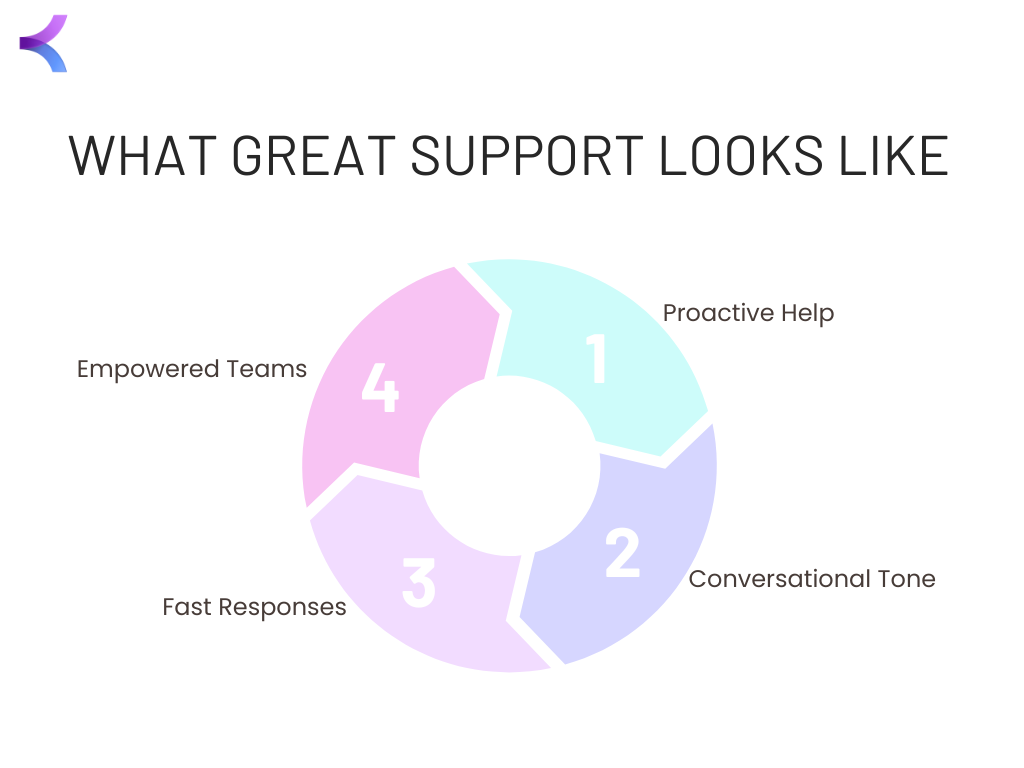
1. Proactive Help
Instead of hiding contact options in the footer, they anticipate customer needs.
Pop-ups like “Need help checking delivery time?” or “Not sure about your size?” appear precisely where friction happens. This simple shift can increase engagement dramatically.
2. Conversational Tone
Customers can tell when a response is robotic.
Replacing “Your request has been received” with “Got it, let’s sort this out together” humanizes the interaction and keeps customers engaged longer.
3. Fast, Contextual Responses
Speed is critical, but context is what makes it useful.
A fast answer that misses the question wastes time.
Training agents to understand product details and buyer intent ensures every interaction adds value.
4. Empowered Teams
Support should be able to act, not just apologize.
Teams that can issue instant coupons, process refunds, or upgrade shipping resolve problems faster and retain more customers.
When Nike’s digital support team empowered agents to offer immediate solutions for delivery issues, it reduced complaint-to-churn rates by almost a third.
The best support feels invisible, like a silent safety net that catches every near-miss before it becomes a lost sale.
The Hesitation Map
Here’s a framework to visualize where support can make the biggest difference:
| Stage | Common Friction | Support Action | Goal |
|---|---|---|---|
| Pre-purchase | Product doubts, fit, trust | Proactive chat, live agent | Remove hesitation |
| Checkout | Coupon, shipping, payment | Embedded chat, contextual FAQ | Maintain flow |
| Post-abandonment | Distraction, delay, doubt | Personalized recovery message | Reconnect & reassure |
Audit each stage and identify where customers hesitate. Then build targeted support responses that bridge those pauses.
FAQs
Q1: Why do customers abandon carts even with a perfect checkout flow?
Because hesitation beats convenience. A smooth experience can’t replace reassurance. Customers need instant answers to personal doubts before paying.
Q2: What kind of support reduces abandonment most effectively?
Hybrid support, AI handling routine queries and trained human agents managing emotional or complex issues, delivers the best conversion outcomes.
Q3: Should cart recovery messages be automated or personalized?
Personalized recovery works best. Mentioning what a customer viewed or the concern they raised increases engagement and conversion.
Q4: What’s the ideal support response time during checkout?
Under one minute. Any delay longer than that sharply decreases recovery probability.
Conclusion
Ecommerce success doesn’t come from another UX test or a new checkout plugin. It comes from understanding that buyers don’t abandon because they’re impatient, they abandon because they feel unheard.
Support is the missing link between hesitation and confidence.
When customers feel guided, not just served, they stay.
At Kim.cc, we believe every checkout hesitation is a support opportunity.
You don’t need to redesign your store. You just need to show up when your customers pause.
Stop Losing Carts to Silence
You don’t need another UX test. You need support that shows up before abandonment happens.
Book a Free 20-Minute Strategy Session →

